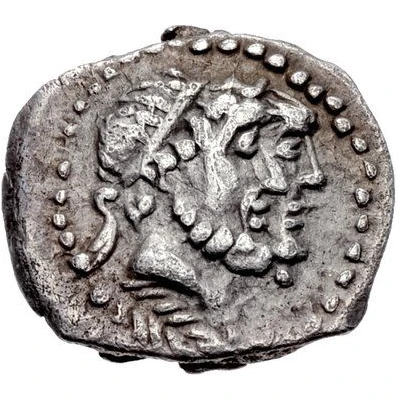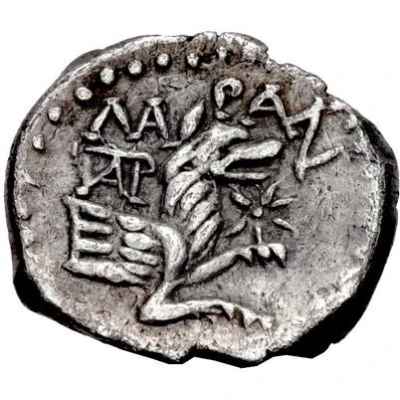


© Classical Numismatic Group, Inc.
Obol 324 BC - 323 BC
| Silver | 0.67 g | 11 mm |
| Issuer | Laranda (Lucaonia) |
|---|---|
| Type | Standard circulation coin |
| Years | 324 BC - 323 BC |
| Value | 1 Obol (⅙) |
| Currency | Drachm |
| Composition | Silver |
| Weight | 0.67 g |
| Diameter | 11 mm |
| Shape | Round (irregular) |
| Technique | Hammered |
| Orientation | Variable alignment ↺ |
| Demonetized | Yes |
| Updated | 2024-10-10 |
| Numista | N#402521 |
|---|---|
| Rarity index | 100% |
Reverse
Forepart of wolf right; monogram to left, star to right.
Comment
Göktürk 64.
Interesting fact
The Obol coin from Laranda (Lucaonia) was used as a form of currency in ancient Greece, specifically in the city-state of Laranda, during the 4th century BC. It was made of silver and weighed approximately 0.67 grams. Despite its small size, the Obol coin played an important role in the economy of the time, as it was used to purchase everyday items such as food, clothing, and other necessities. The coin's design featured an image of a lion's head on one side and an inscription on the other, which helped to identify its origin and authenticity. Today, the Obol coin is considered a rare and valuable collector's item, offering a glimpse into the economic and cultural practices of ancient Greece.